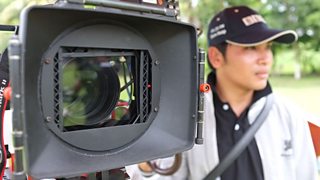Supporting media: what works and why?
Mary Myers
Media and development specialist

主播大秀 Media Action鈥檚 support for media reports cover Cambodia, Syria, South Sudan, Uganda and Bangladesh.
I've just finished writing a synthesis report about how media can be supported in countries where media freedoms and rights are constrained. It was commissioned by 主播大秀 Media Action who asked me to bring together the findings of five case studies covering Bangladesh, Cambodia, Syria, South Sudan and Uganda, commissioned from five other writers. The finished report is entitled What Works and Why? and can be found .
My first reaction to the task was sceptical – would it be possible to find any workable strategies to support good quality media and journalism across five very different societies? Although some of the countries chosen were not closed autocracies, journalists in all five countries are under all sorts of threats and stress, and the right to free expression remains a cause for international concern in all five. I was curious to see what initiatives donors were supporting under such difficult circumstances.
To my surprise I was able to extract quite a long list of workable strategies which are being carried out by courageous people from both outside and inside these five countries.
It was heartening to discover the experiences of community radio activists in Cambodia, such as Beehive Radio, which survive despite the odds. It was humbling to write about the 主播大秀 camera operator in Syria who was imprisoned for three days and tortured for trying to record a more balanced story than the Assad government wants the world to see. It was inspiring to write about the amazing popularity of UN radio in South Sudan, Radio Miraya, despite government crackdowns.
There are many strategies that can work – even in constrained environments. These include avoiding government controls by broadcasting media content via short-wave radio, satellite or the internet from outside the country, or working online to support and train journalism and activists.
It is possible to work from inside a country even when its government clamps down on the media. These include working carefully with the state - with the state broadcaster, for example - and supporting local press freedom groups, such as local chapters of Transparency International, as in Bangladesh. I found several examples of support for local media advocacy groups, and for the relay of foreign media content by local media outlets. Many different types of capacity building are possible, such as focusing on topics that are either neutral (like business training) or of 'public interest' (such as health or environmental topics) in order to be seen as non-political. Where conditions permit, there are examples of capacity building for local media houses, especially with carefully selected independent or community outlets. This strategy has worked very well in Uganda. Developing pre-packaged content and programming is sometimes necessary when live media reporting of contentious issues is limited by arbitrary restrictions.
Related links
The full series of country case studies:
